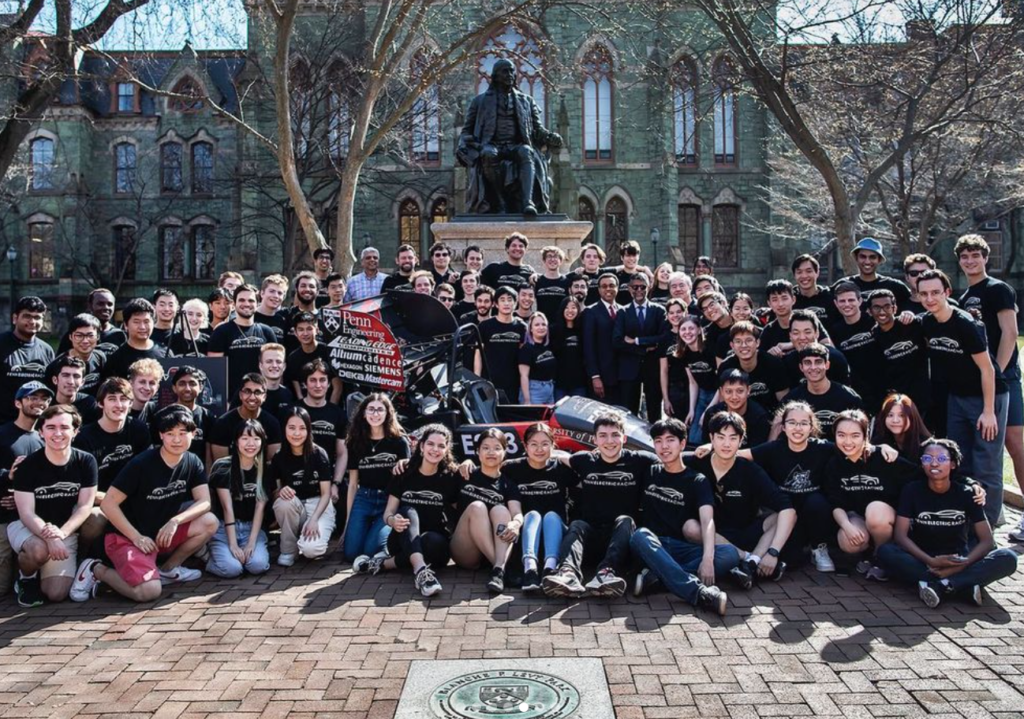
After a two-year hiatus, Penn Electric Racing – the University of Pennsylvania’s Formula Society of Automotive Engineers (FSAE) racecar-building team – has unveiled their latest creation: the REV7. The team, who has earned 39 trophies during their eight years of competing, is slated to bring the REV7 to this year’s FSAE Michigan competition in Brooklyn, Michigan in May.
Roughly two years ago to this date, Penn’s campus physically shut down due to the COVID-19 pandemic, and the team was sent home before they were able to finish building their previous REV6 model. They competed in three events for FSAE’s Virtual Competition in May and June of 2020, and then worked completely virtual on REV7’s design for the academic year following.
So many of their members ended up graduating during the work-from-home period that the team spent that time essentially designing a brand new car.
“We decided that it was best for team sustainability to redesign the car in order to ensure design ownership,” said Leslie Lytle, the team’s Accumulator and Operations Lead. “The pandemic gave us an unusually long time to design the new car, which really allowed us to fully understand every part.”
Lytle, a Penn Engineering junior from Alexandria, Virginia majoring in Materials Science and Engineering (MSE), said that when in-person work resumed in September 2021, the machining, manufacturing, and assembling of the car required a unique resourcefulness. The knowledge and guidance that was normally passed down from more senior classmates with previous build experience was largely lost.
“The juniors on the team who had designed REV7 had never finished a car before and there were many unknowns in the assembly process due to lack of experience,” said Lytle. “Despite this, we machined about 70 unique parts for the car, learning new manufacturing techniques, and successfully assembled the car you see presented at Unveiling.”
Key changes to the design include the switch from REV6’s four-wheel drive to REV7’s two-wheel drive, and the implementation of the team’s first pullrod suspension system. They also made the critical decision to change this year’s design to a rear wheel drive “to ensure that current team members designed every system on REV7 and had a full understanding of how they work”, said Lytle.
The switch from four-wheel drive to two meant that the team needed to redesign the battery pack and the powertrain, a composite of parts responsible for using energy stored in the vehicle’s battery system to make the car go.
“Our new powertrain assembly features a new Emrax motor, along with custom designed and machined motor housing, uprights, and wheel hubs,” said Lytle. “For our new battery pack, we utilized pouch cells, which increased the pack voltage to 476 volts and increased energy density by 1.5 times compared to previous designs.”
Now, with the unveiling in the rearview, the team will focus on getting the electrical and mechanical systems working together so they can extensively test the car before the competition in May.
